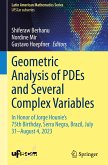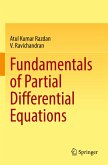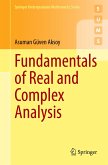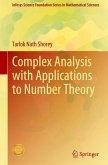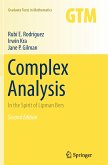This textbook is intended for an introductory course in the theory of complex analysis and Riemann surfaces. A special feature includes the systematic treatment of complex analysis from the point of view of partial differential equations. The main goal is to study complex analysis in one variable using modern mathematics with emphasis on its deep connections to other branches of mathematics, especially on the tremendous development of partial differential equations in the twentieth century. The book can also be used as a reference for students and researchers interested in modern concepts and techniques in one and several complex variables, algebraic and complex geometry, partial differential equations and geometric analysis.
The book is reasonably self-contained with much background material given in the appendices. Many examples and exercises are provided. The text is based on lecture notes taught by the first author over the years at the University of Notre Dame to widely varied audiences, including students in mathematics, physics, engineering and other sciences. By taking advantage of the development of Hilbert space methods in partial differential equations, this textbook provides a much-needed update on complex function theory and Riemann surfaces.
In the first five chapters, the authors introduce some background material in complex analysis in one variable using only multivariable calculus. This includes the Cauchy integral formula with its applications, the Riemann mapping theorem and the theorems of Weierstrass and Mittag Leffler. Starting from Chapter 6, a comprehensive study of the roles that partial differential equations play in complex analysis is presented systematically with focus on the Cauchy Riemann equation and the Laplacian. A thorough treatment of the Laplace and Poisson equations with both classical and Hilbert space approaches is given and applied to obtain function theory on Riemann surfaces. The book also introduces several complex variables and bridges the gap between one and several complex variables.
The book is reasonably self-contained with much background material given in the appendices. Many examples and exercises are provided. The text is based on lecture notes taught by the first author over the years at the University of Notre Dame to widely varied audiences, including students in mathematics, physics, engineering and other sciences. By taking advantage of the development of Hilbert space methods in partial differential equations, this textbook provides a much-needed update on complex function theory and Riemann surfaces.
In the first five chapters, the authors introduce some background material in complex analysis in one variable using only multivariable calculus. This includes the Cauchy integral formula with its applications, the Riemann mapping theorem and the theorems of Weierstrass and Mittag Leffler. Starting from Chapter 6, a comprehensive study of the roles that partial differential equations play in complex analysis is presented systematically with focus on the Cauchy Riemann equation and the Laplacian. A thorough treatment of the Laplace and Poisson equations with both classical and Hilbert space approaches is given and applied to obtain function theory on Riemann surfaces. The book also introduces several complex variables and bridges the gap between one and several complex variables.


